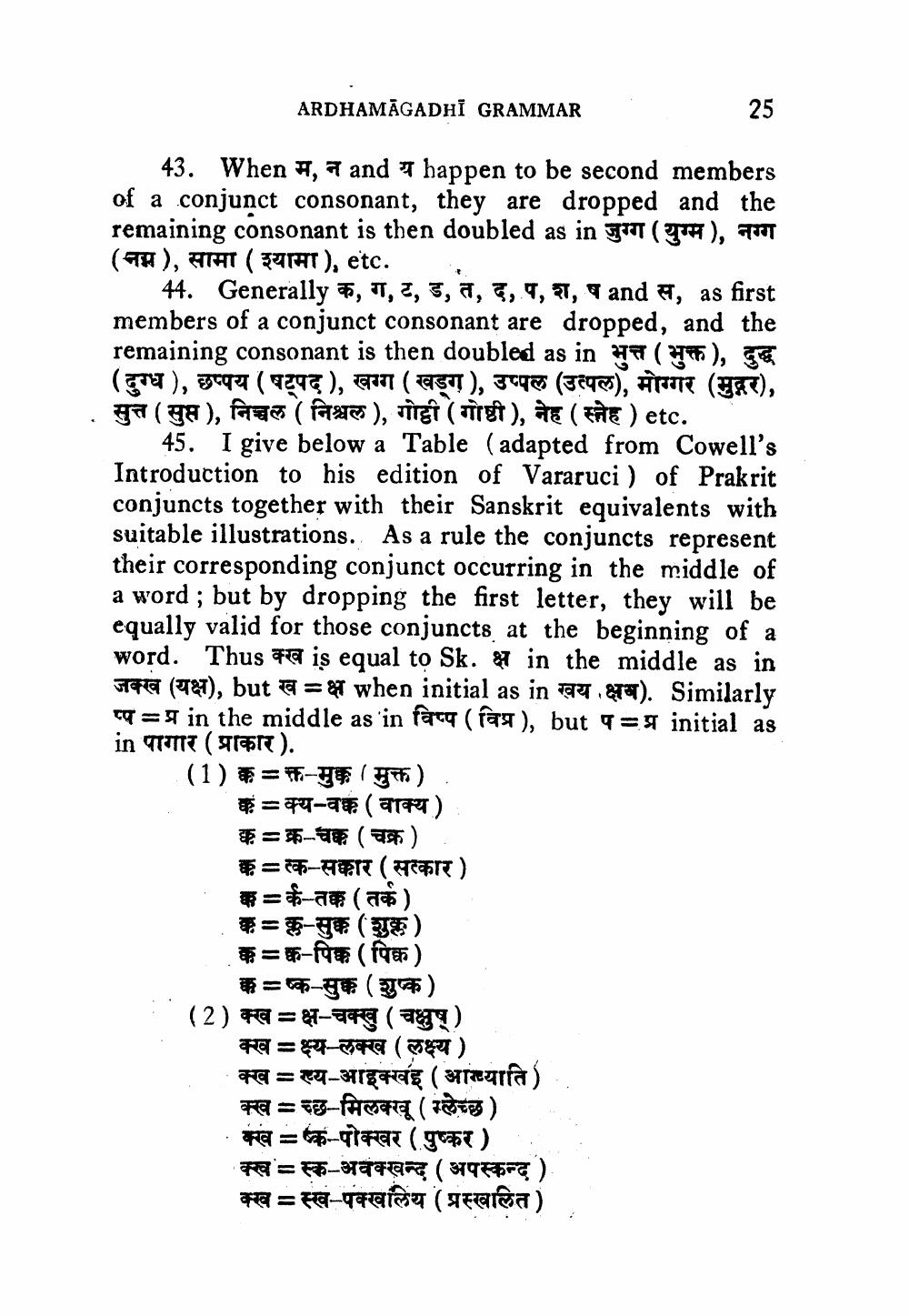________________
ARDHAMĀGADHI GRAMMAR
___ 25
43. When म, न and य happen to be second members of a conjunct consonant, they are dropped and the remaining consonant is then doubled as in जुग्ग (युग्म ), नग्ग (नम), सामा (श्यामा), etc.
44. Generally क, ग, ट, ड, त, द, प, श, ष and स, as first members of a conjunct consonant are dropped, and the remaining consonant is then doubled as in भुत्त (भुक्त), दुद्ध (दुग्ध ), छप्पय (षट्पद ), खग्ग ( खड्ग), उप्पल (उत्पल), मोग्गर (मुद्गर), सुत्त (सुप्त), निश्चल (निश्चल), गोही (गोष्ठी), नेह (स्नेह ) etc.
45. I give below a Table (adapted from Cowell's Introduction to his edition of Vararuci) of Prakrit conjuncts together with their Sanskrit equivalents with suitable illustrations. As a rule the conjuncts represent their corresponding conjunct occurring in the middle of a word; but by dropping the first letter, they will be equally valid for those conjuncts at the beginning of a word. Thus we is equal to Sk. * in the middle as in
जक्ख (यक्ष), but ख %क्ष when initial as in खय क्षय). Similarly प्प प्र in the middle as in विप्प (विप्र ), but q=प्र initial as in पागार (प्राकार).
(1) क= क्त-मुक्क । मुक्त)
कक्य-वक्क (वाक्य) क -क्र-चक्क (चक्र) क= स्क-सक्कार (सरकार) कर्क-तक (तर्क) . क%क्ल-सुक्क (शुक्ल)
क=क-पिक्क (पिक्क)
क=ष्क-सुक्क (शुष्क) (2) क्ख =क्ष-चक्खु (चक्षुष)
क्ख =क्ष्य-लक्ख (लक्ष्य) क्ख = ख्य-आइक्खइ ( आख्याति) क्ख = च्छ-मिलक्खू (म्लेच्छ) क्ख =क-पोक्खर (पुष्कर) क्ख स्क -अवक्खन्द (अपस्कन्द) क्ख = स्ख-पक्खलिय (प्रस्खलित) .




